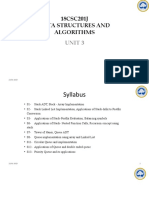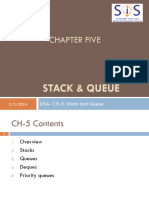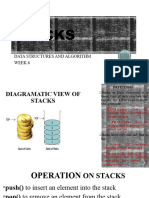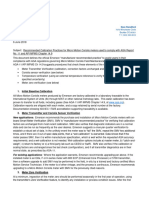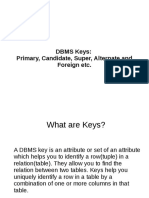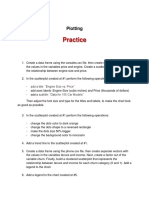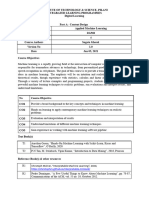0% found this document useful (0 votes)
16 views1 page(Chapter 03) Stack - Google Slides
Chapter 3 of the Data Structures Course focuses on stacks, explaining the LIFO principle and basic operations such as push, pop, and peek. It discusses implementations using linked lists and arrays, as well as various applications of stacks including call stacks, expression evaluation, and parenthesis matching. The chapter also includes practice problems to reinforce understanding of stack operations.
Uploaded by
jh0287079Copyright
© © All Rights Reserved
We take content rights seriously. If you suspect this is your content, claim it here.
Available Formats
Download as PDF, TXT or read online on Scribd
0% found this document useful (0 votes)
16 views1 page(Chapter 03) Stack - Google Slides
Chapter 3 of the Data Structures Course focuses on stacks, explaining the LIFO principle and basic operations such as push, pop, and peek. It discusses implementations using linked lists and arrays, as well as various applications of stacks including call stacks, expression evaluation, and parenthesis matching. The chapter also includes practice problems to reinforce understanding of stack operations.
Uploaded by
jh0287079Copyright
© © All Rights Reserved
We take content rights seriously. If you suspect this is your content, claim it here.
Available Formats
Download as PDF, TXT or read online on Scribd
/ 1

























